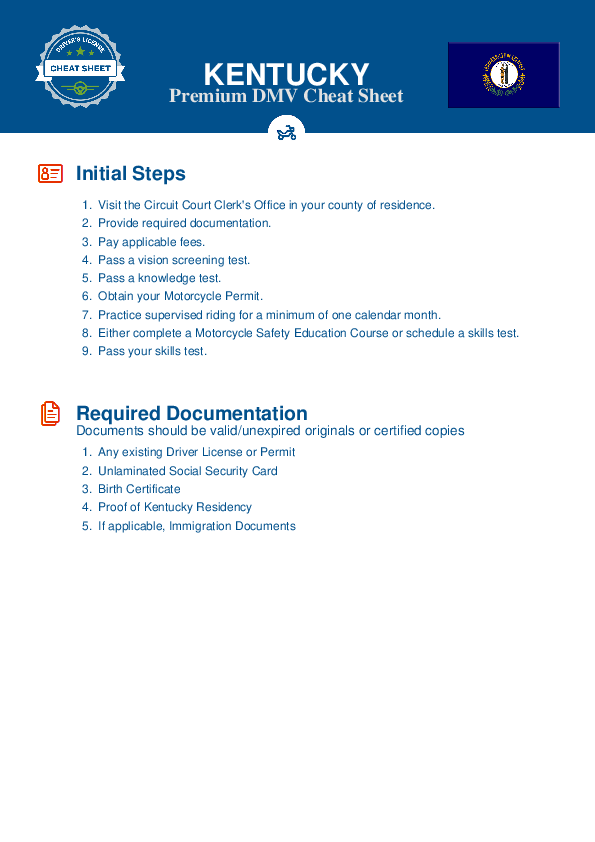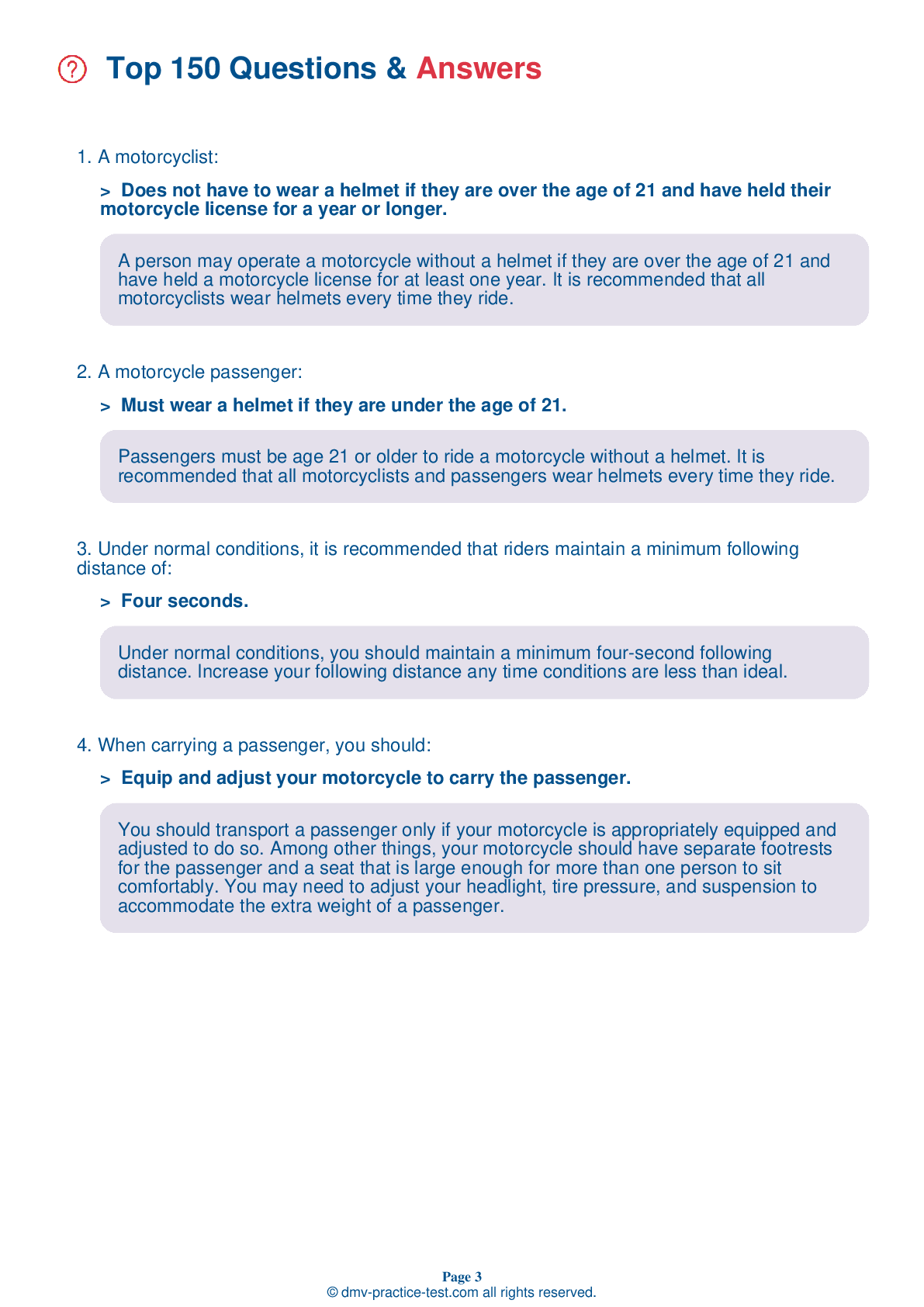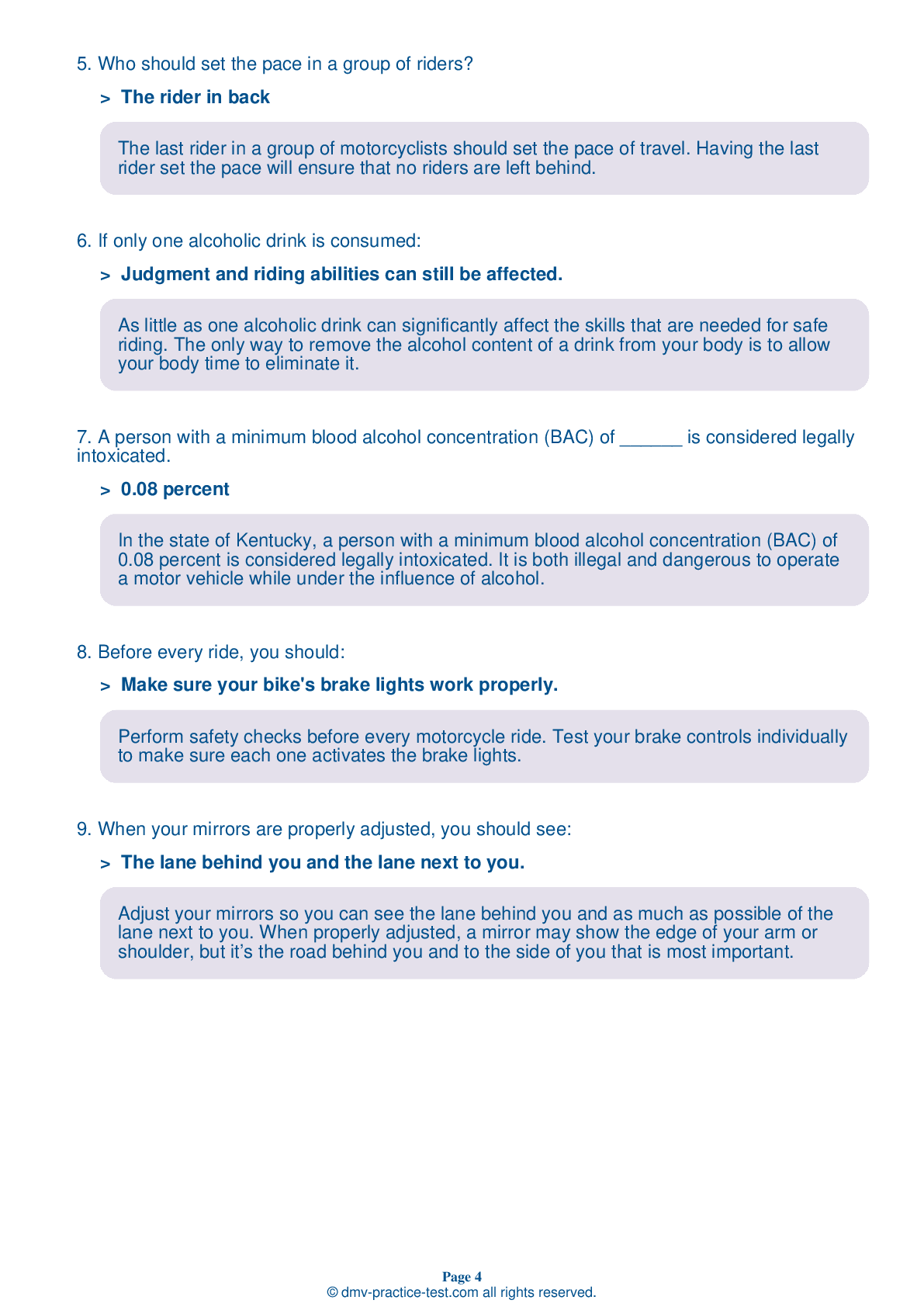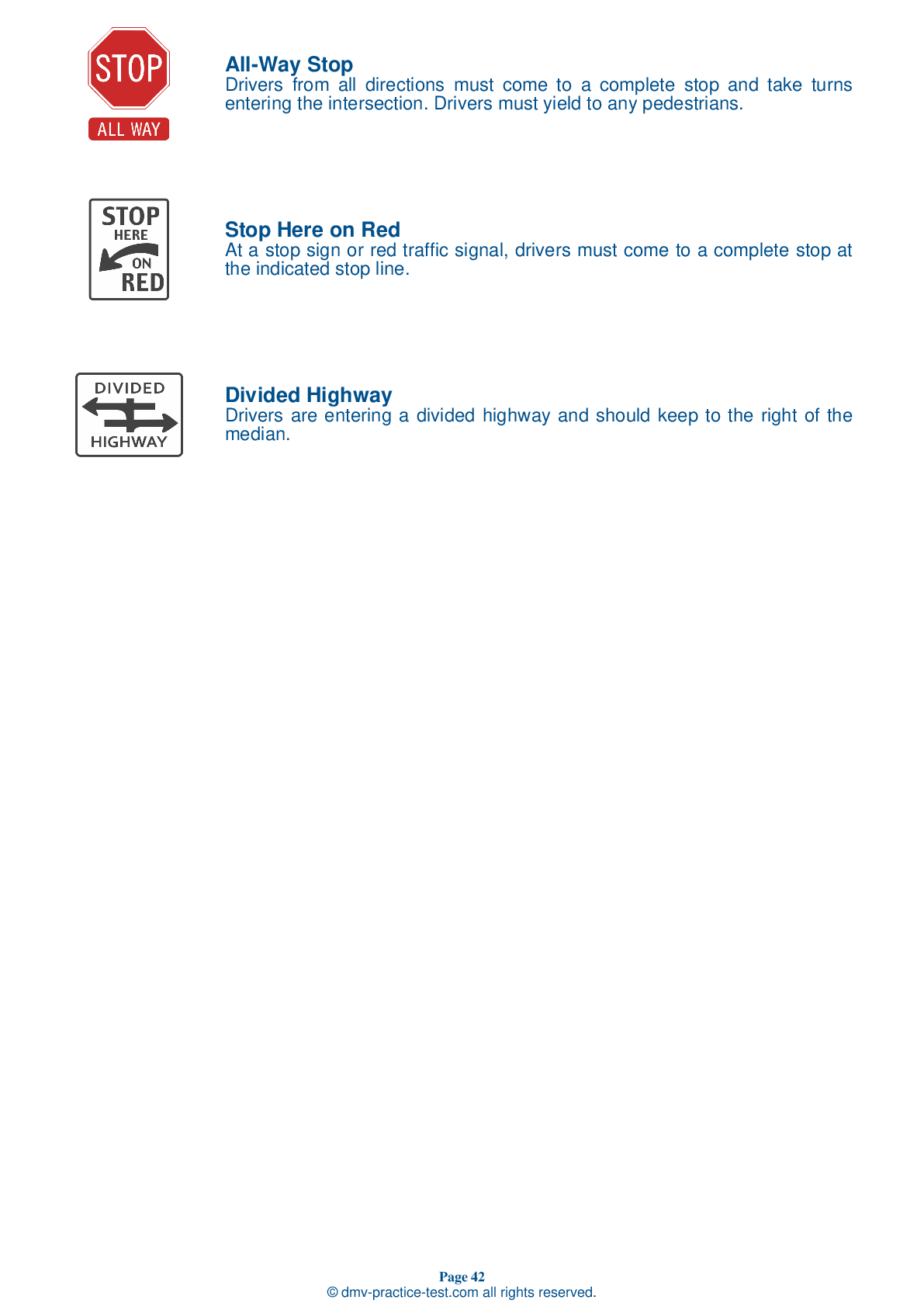Motorcycle Test | License KY 2025 | FREE Online Practice! #6 Page 4 of 4
Take this FREE motorcycle test (license in KY 2025) to check your knowledge of the road rules. To improve your results, download a motorcycle handbook online, study theory, and practice for free on our website. Still worried about how to get a motorcycle license in Kentucky in 2025? Check our website for more sample tests, train as much as possible, and boost your grades!
22 . This sign shows one type of:
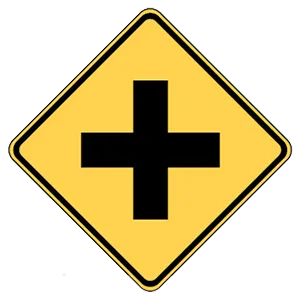
This sign indicates that an intersection with a crossing road is ahead.
23 . When passing a row of parked cars to your right when there is no oncoming traffic to your left, you should:
When passing a row of parked cars, it is generally best to stay on the side of your lane that is not directly next to the cars. This will help to protect you from potential hazards like car doors being opened or people stepping out from between the cars. If there is traffic coming from the opposite direction, it is a good idea to stay in the center portion of the lane.
24 . You should do a pre-ride inspection:
A small technical fault can have much more serious consequences on a motorcycle than on a car. To avoid these consequences, inspect your motorcycle before every ride.
25 . When a vehicle attempts to pass you from behind, you should:
When being passed, it is generally best to ride in the center portion of your lane. Being too close to the passing vehicle increases the risk of a collision.
26 . To reduce your reaction time, you should:
In potential high-risk areas, such as near intersections, shopping areas, school zones, and construction zones, cover the clutch and both brakes to reduce the time you will need to react to potential hazards.
27 . A proper lane position can help you do all of the following, except:
Your lane position affects a number of factors that are important to your safety on the road. Among other things, your position should help you increase your ability to see and be seen, avoid other drivers' blind spots, and set you up for any turns you plan to make.
28 . When a group of riders is passing another vehicle on a two-lane road, the riders should:
On a two-lane road, a group of motorcyclists should pass one at a time. Each motorcyclist should complete the pass before another begins to pass.
29 . An engine will seize due to:
Engines seize when they are low on oil. Without oil, the engine’s moving parts cannot move smoothly against each other and the engine overheats.
30 . When adjusting your mirrors, you should focus on:
Adjust your mirrors so you can see the lane behind you and as much as possible of the lane next to you. When properly adjusted, a mirror may show the edge of your arm or shoulder, but it’s the road behind you and to the side of you that is most important.
See the exact questions that will be on the 2025 Kentucky DMV exam.
99.2% of people who use the cheat sheet pass the FIRST TIME
Jeneen was tired of paying $5/gallon. She got herself a scooter that required the motorcycle license. She studyed the motorcycle test cheat sheet and passed her test the next day!
Christopher tells us how he knew nothing prior to obtaining the motorcycle study guide, and he only got one question wrong because he clicked on the wrong answer by mistake.
